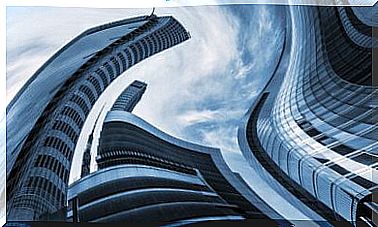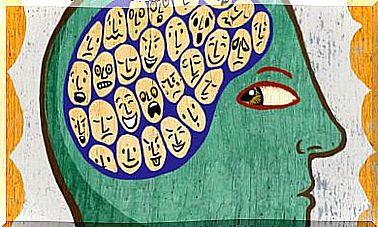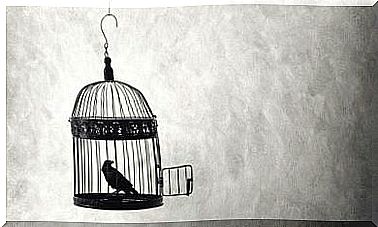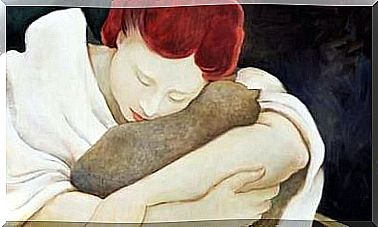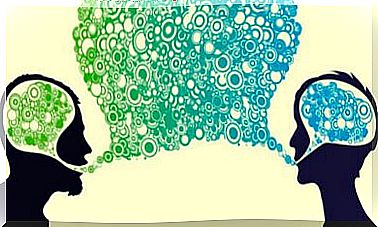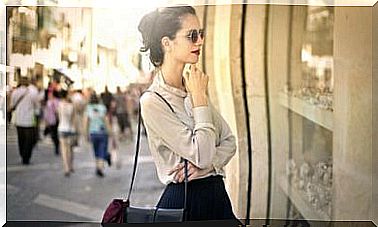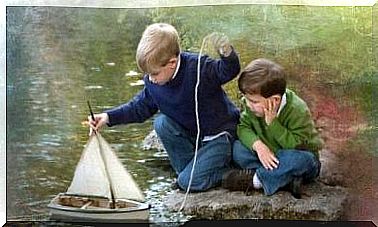5 Art Therapy Exercises For Children
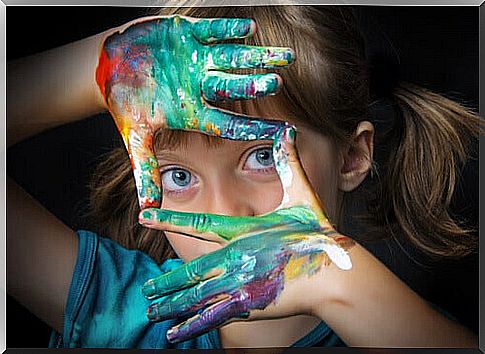
Children are great explorers. Day by day they express their motivation to know and discover new things. They are beings who marvel at everything that surrounds them and make their lives a magical world in which discoveries reign.
The curiosity that children harbor shapes the potential for their creativity. They have a great capacity to generate new ideas, which we can see reflected in their games and their questions. And they have their imagination as their treasure, an important resource that helps them enjoy themselves in the best way.
Now, the creativity of children can be explored in various ways, one of them is art. Through creative processes, children can learn, explore, stimulate various sensations and perceptions, become motivated, learn resources to face difficult situations, improve attention, motor skills and their visuospatial ability, among many others.
Even many times we think that children do not have problems, but this is not the case. Of course they have them, like fears and worries, the difference is that they show them in another way. Art therapy exercises are an excellent option both to help them find a way of expression and to solve them.
Here we explain 5 interesting art therapy exercises for children that strengthen their creative world and also facilitate the expression of what concerns them most.
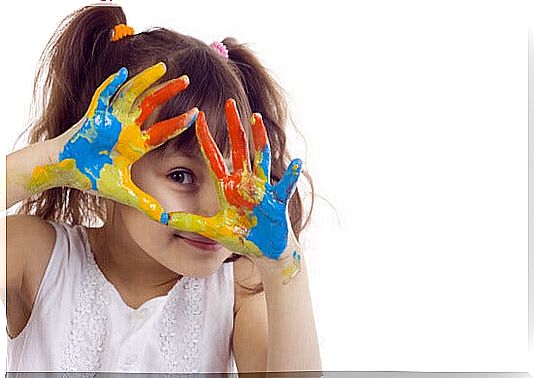
The magic of mandalas
Mandalas are sacred circles that come from eastern cultures and that have begun to expand throughout the world today. There are different ways to use them with children. Some of them are the following:
- Coloring mandalas. Children can decorate or paint mandalas that are already designed. In this way, we will help them to enter a state of calm and relaxation.
- Create and decorate mandalas. When they have the ability to draw more precise drawings, they can create their own mandalas and then decorate them. In addition to relaxing, they will awaken your creativity.
- Mandalas and mindfulness. The therapist invites the children to pay close attention to the creative process. To do this, use elements that favor this situation, such as music.
The magic of mandalas is to facilitate the child to connect with himself, with his deepest thoughts and emotions. Through them, children can express how they feel and increase their creative and visual-motor skills. In addition, the art therapist can analyze the child’s thoughts and feelings through what he projects on them.
Art therapy for children with plastic art
Plastic art exercises are wonderful. Through elements such as photographs or a drawing, children create their work of art and explore various sensations and perceptions during the process. The ideas are multiple, here we show you some:
- Photography. Here the child knows himself through images of himself and his world. Subsequently, he reflects on the choice of his photographs and the relationship with his conflicts.
- Painting. Through it, the child is able to show part of his internal world. In addition, the paint can also be used with the little ones to stimulate the senses. For example, it can be painted with your hands.
- Cuts. Through the creation of a collage, children can stimulate their minds to put into it what they feel and think.
- Sculpture. It is about creating things using clay or some moldable material, even your own body can also be used to express thoughts, situations and certain feelings.
All these exercises favor the release of problems and changes of perspectives. The therapist may even suggest that the children redo the play as a representation of the change. In this way, the problems will take another form and new paths can be sought.
The world of writing
To carry out art therapy with children through writing, age must be taken into account when choosing activities.
A possible exercise would be to make a description of themselves. Once finished, an analysis is made with them about the why of each aspect, as well as what they would like to improve and what not.
Another art therapy exercise for children is writing stories. It is about children creating a story, paying attention to each character, place where it takes place, and scene. In addition, it is then reflected together to understand the story, asking the child to associate the characters with the people they know, following the same process with the places and activities in the story. This will provide a lot of information about what happens to the child and how we can guide him to its resolution.
As we can see, writing favors attention, enhances creativity and allows children to free themselves from problems, guided by the therapist.
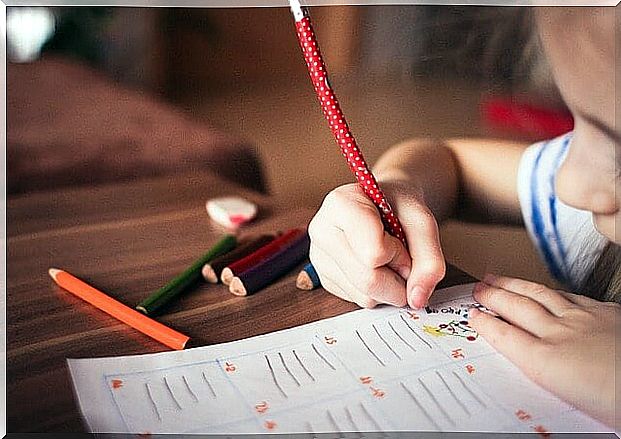
Art therapy for children through movement
Through movement children can achieve an integration of their emotional, cognitive and physical aspects. In addition, it allows them a better spatial orientation, strengthen creativity, release endorphins and express their emotions and ideas.
- Theater. Children can show what happens to them through representation, they can even be asked later to represent a way to solve it.
- Dance. Dance has incredible therapeutic power because it helps children channel their emotions, connect with themselves, and become aware of their body and their place in space.
Power of music
Music is an element that is capable of connecting with the deepest emotions. Therefore, it can be used in many ways to carry out different art therapy exercises for children. Some of them are the following:
- Music and reflection. In this exercise the child explores the deepest part of himself in a reflective space favored by music. Then an analysis of what happened is made so that the child integrates his experiences at a physical, emotional and cognitive level.
- Compositions. This exercise is about letting the children use all their ingenuity to compose a song that reflects what they think and feel, and then sing or comment on it. In a part of the session, what happened can be analyzed to promote the child’s learning and the song can even be reshaped as a symbol of conflict resolution.
- Singing. Through singing, children can express what they feel in a very fun way. For example, they can choose the songs with which they most identify and explore what happens in the singing session through work with the therapist and with the group.
- Instruments. In this case, the children explore the instruments and compose, expressing through music what happens to them.
Music favors the resolution of emotional problems, strengthens creativity and encourages socialization. In addition, it enhances attention, memory, and helps to structure language. It is a unique therapeutic tool.
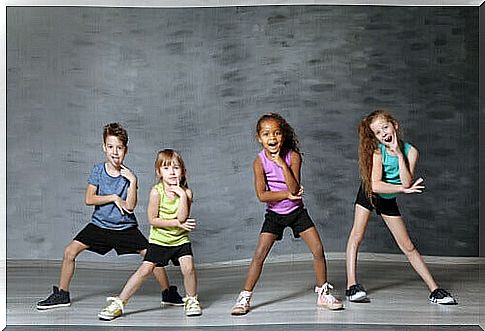
Benefits of art therapy for children
As we can see, art therapy for children provides numerous benefits. Some of them are the following:
- Boost creativity.
- It allows the expression of thoughts and feelings.
- It encourages the integration of psychological, physical and social aspects.
- It enhances executive functions such as attention, memory, spatial orientation.
- Improve language.
- Encourage self-knowledge.
- It helps to work in a group.
- Generates security and feelings of being heard.
- Encourage exploration.
- Increase self-confidence
- Promotes communication.
- It favors decision making.
- Helps to cope with problems.
- Improves motor skills.
Art therapy is a way to promote well-being in children. An unbeatable method that allows them to learn how to express, solve and face problems in a fun way.

